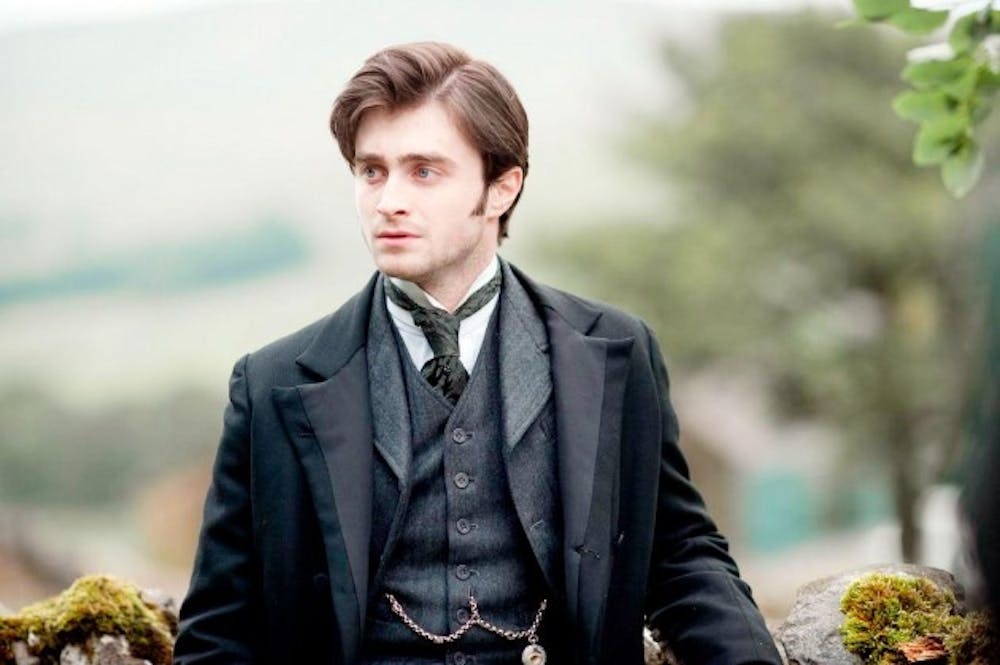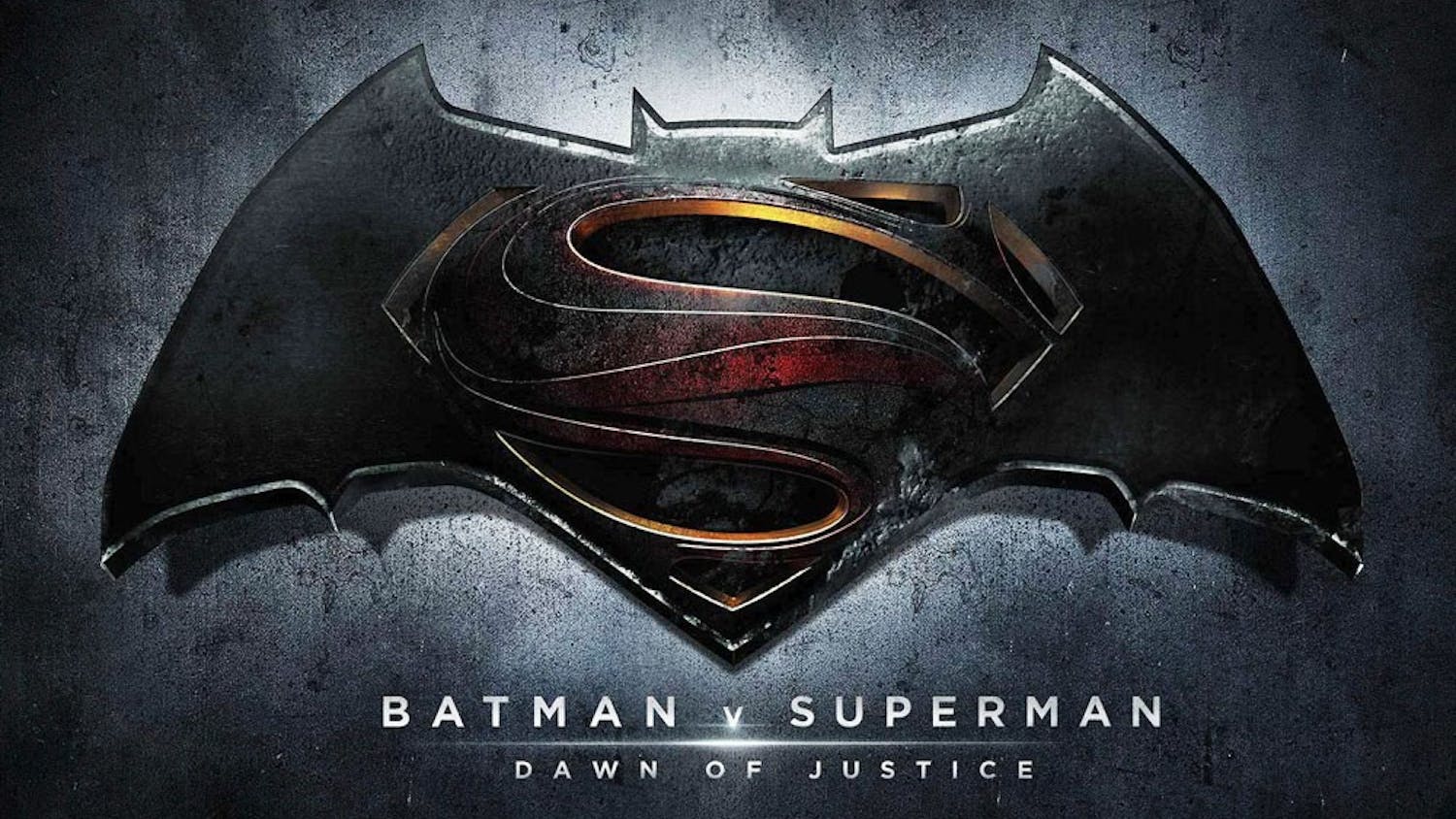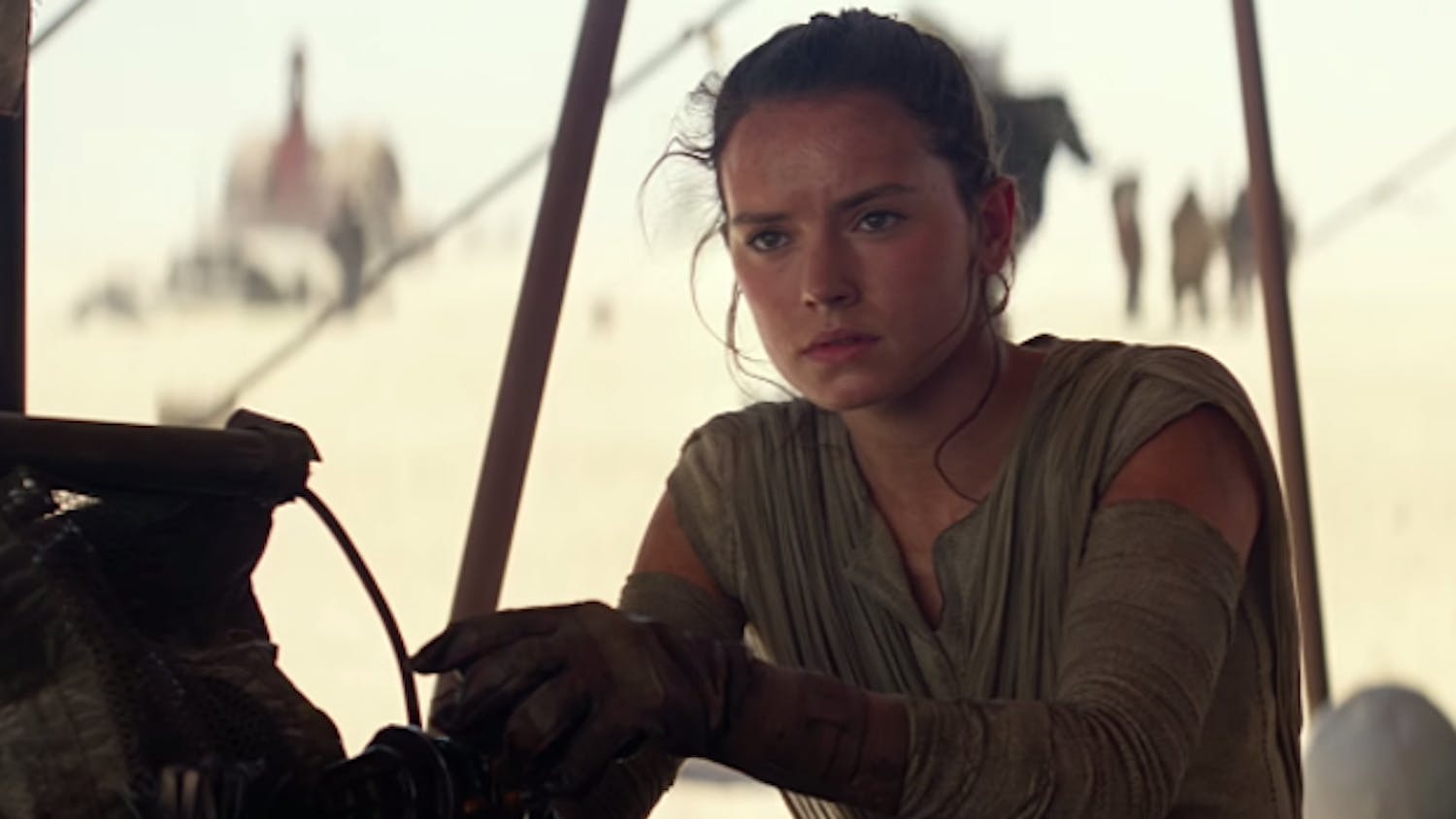Movie: The Woman in Black
Release Date: Feb. 3
Studio: Hammer Film Productions
Grade: C+
The film genre of "horror" has come to include anything from '80s slasher films to psychological thrillers à la Seven (1995). Daniel Radcliffe's first post-Potter film, The Woman In Black, teeters toward the latter end of the spectrum, employing standard but effective suspense techniques and an eerie setting of early twentieth-century England.
A London lawyer, Arthur Kipps (Daniel Radcliffe, Harry Potter and the Deathly Hallows: Part II), goes to the countryside to deal with a deceased Mrs. Drablow's estate that his firm is handling. Kipps is not exactly given a warm welcome by the townspeople, except for one Sam Daily (Ciarán Hinds, Tinker Tailor Soldier Spy).
The hostility culminates when a young girl in the town inexplicably swallows lye and dies in Kipps' presence. Daily then reveals to Kipps the mysterious circumstances surrounding children's deaths in the town and their connection to the Eel Marsh House Kipps is dealing with. As more children die and his own motherless son becomes at risk, Kipps decides to go to drastic lengths to quell the vengeful spirit of the Woman in Black.
While The Woman in Black at times feels like something that has already been done (actually, it has already been done, in Susan Hill's 1983 novel of the same name and the subsequent 1989 film), it certainly brings something fresh to the table. Among all the horror films that aim to blatantly and overtly scare the audience witless, The Woman in Black employs emotional subtleties and period bells and whistles to amplify the tension in the theater. Small music box toys from the turn of the century and antique architecture add to the atmosphere of terror in a distinct way.
While the period-film quality of the movie does act as benefit to the action, it – along with the specialized location – also does something to distance the audience from the scary events; the out-of-body film experience does not leave the theater. Unlike 2002's The Ring, which employs a tangentially similar plot and very similar techniques, The Woman in Black does not translate a historical, localized event to the present.
Another aspect of the film that is both a strength and weakness is the use of a limited setting. Most of the action takes place in a single hallway and a few other rooms in the same house. This method certainly adds to the suspense, because though the audience knows it is the same hallway or room, they also know something must have to happen there. This setting can, however, become monotonous, as the camera angles stay relatively the same.
The film does show an adept use of sound effects, which, at times startling, definitely amps up the suspense. The crescendo of music does not always correspond with a frightening action; indeed, it is often aligned with moments of monotony, while frightening occurrences happen in complete silence or in a period of steady sound.
Other effects are not so well done, like the use of green screen. The final scene demonstrates an abysmal use of this technique, something that could have been eradicated with a small portion of the $13 million budget.
But has Radcliffe really become a grown-up actor? The answer is yes and no. While his facial expressions are affecting and mature, his gait, movement, and speech need a bit of refinement. Perhaps this is not the best type of role for him to prove himself a matured and learned actor. Something to keep in mind when viewing this film is how much different (and likely better) the film would be with someone like Ewan McGregor or even Henry Cavill in the lead role.
The Woman in Black gives an interesting alternative to the gore and cliché scare tactics of other films in the genre, and among other films like Big Miracle and One For the Money floating around at the box office this week, you can't really go wrong with The Woman in Black.
Email: arts@ubspectrum.com





